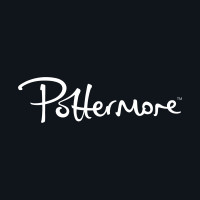After Umbridge’s departure from Hogwarts, Harry concluded there was no point continuing his Dumbledore’s Army lessons. Luna and Neville were seriously disappointed. ‘I liked the DA! I learned loads with you!’ Neville) said, and when Hermione later used her enchanted Galleons to call on the D.A. for help ahead, they and Ginny were quickest to respond.
In some ways Harry was right – for all Snape’s faults as Defence Against the Dark Arts teacher, he did at least believe in practical application, so the D.A. wasn’t strictly necessary post-Umbridge. But it still had a very important role to play, both in terms of practical defence and as a figurehead of Hogwarts’ resistance. This was particularly true for those who remained at Hogwarts after Harry’s departure, facing maltreatment and endless rumours about the reasons behind his absence.
Under the Carrows, the D.A. was more essential then ever

Neville put it best. Hogwarts’ new teachers, Death Eaters Amycus and Alecto, made Umbridge ‘look tame’: chaining up first years, making students practice the Cruciatus Curse, teaching that Muggles are like animals and beating students who stood up to them. Students like Seamus, whose injuries rendered his face unrecognisable, and Neville, who Ron observed had been used ‘as a knife sharpener’. The Carrows were as cruel and abusive as you’d expect Voldemort’s followers to be, but the D.A. responded with as much spirit and defiance as they ever showed Umbridge.
Neville became the D.A.’s leader

At first, Neville, Ginny and Luna shared the leadership role, but then Luna was kidnapped, and with Ginny unable to return after Easter, it all fell to Neville. Which was fitting, given how closely Neville and Harry were connected by the prophecy that could, once, have referred to either of them. As leader of the D.A. Neville really showed his Gryffindor colours: brave, outspoken, refusing to give in. Those were all things he’d observed Harry do:
‘The thing is, it helps when people stand up to them, it gives everyone hope. I used to notice that when you did it, Harry.’
Harry Potter and the Deathly Hallows
Neville was more than equal to the task, proving how far he’d come – from nervous first year to leader of Hogwarts’ resistance; a real alternative Chosen One. The way he talked so matter-of-factly about his experiences and his Grandmother’s pride showed an increased confidence in his abilities and his sense of right and wrong. Hogwarts under the Carrows might have been horrific, but Neville under pressure was a force to be reckoned with – witness him shouting ‘Dumbledore’s Army’ in Voldemort’s face, refusing to surrender.

Hermione’s enchanted Galleons remained priceless
In the early weeks of the Carrow regime, Neville, Ginny and Luna used these charmed coins to communicate, sneaking out to graffiti walls with phrases like ‘Dumbledore’s Army, Still Recruiting’. Later, with the Carrows stepping up the torture of D.A. members like Michael Corner – caught releasing an imprisoned first year – the coins remained the D.A.’s main point of communication. Luna used hers to let Neville know she was safe, and Neville used them to call the other members of the D.A. to Hogwarts as Harry, Ron and Hermione returned.
Ginny, Luna and Neville attempted to take back the sword of Gryffindor

Presumably the decision to claim the sword had something to do with Dumbledore having left it to Harry, a fact Ginny may have known after Scrimgeour’s visit to The Burrow. The thought of the sword hanging in Snape’s office – a Slytherin everyone then believed had murdered Dumbledore – must have rankled too, but the only students defiant enough to actually take it were the D.A.’s leaders. They may have done it stealthily, but actions like this showed the D.A. was no longer an underground group. By that point, it was a wand-flick away from open rebellion.
The Room of Requirement surpassed itself
The Room of Requirement provided the perfect base for rebellion, expanding to house all those who had fled or been expelled from the Carrows’ Hogwarts. This was as much down to Neville as the Room itself – as Seamus said, ‘He really gets this Room. You’ve got to ask it for exactly what you need…’ And it was a combination that gave the D.A. a real headquarters, exactly when one was needed. Neville’s wish for food even opened up a new passage into the Hog’s Head.
Aberforth’s involvement

In this image:
We don’t know exactly when Aberforth became involved with the D.A., but looking back at previous clues it was clear he had always been a member of the Order of the Phoenix, and very likely Dumbledore made occasional visits to the Hog’s Head to see his brother. It was an unnamed Aberforth who interrupted Snape as he eavesdropped on Trelawney’s prophecy, and it was Aberforth who kept an eye on Harry using the two-way mirror. Dumbledore must have given the mirror to his brother and explained how to use it.
It was also Aberforth who served the D.A. during their first meeting, and it is very possible he may have been reporting their activities to the Order. So you could say he’d been keeping an eye on the D.A. since the beginning – when Neville strolled into his pub looking for food, it just brought the connection out into the open.



